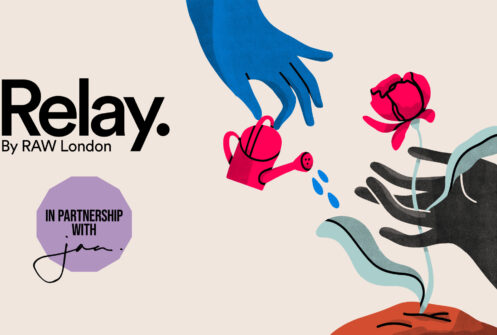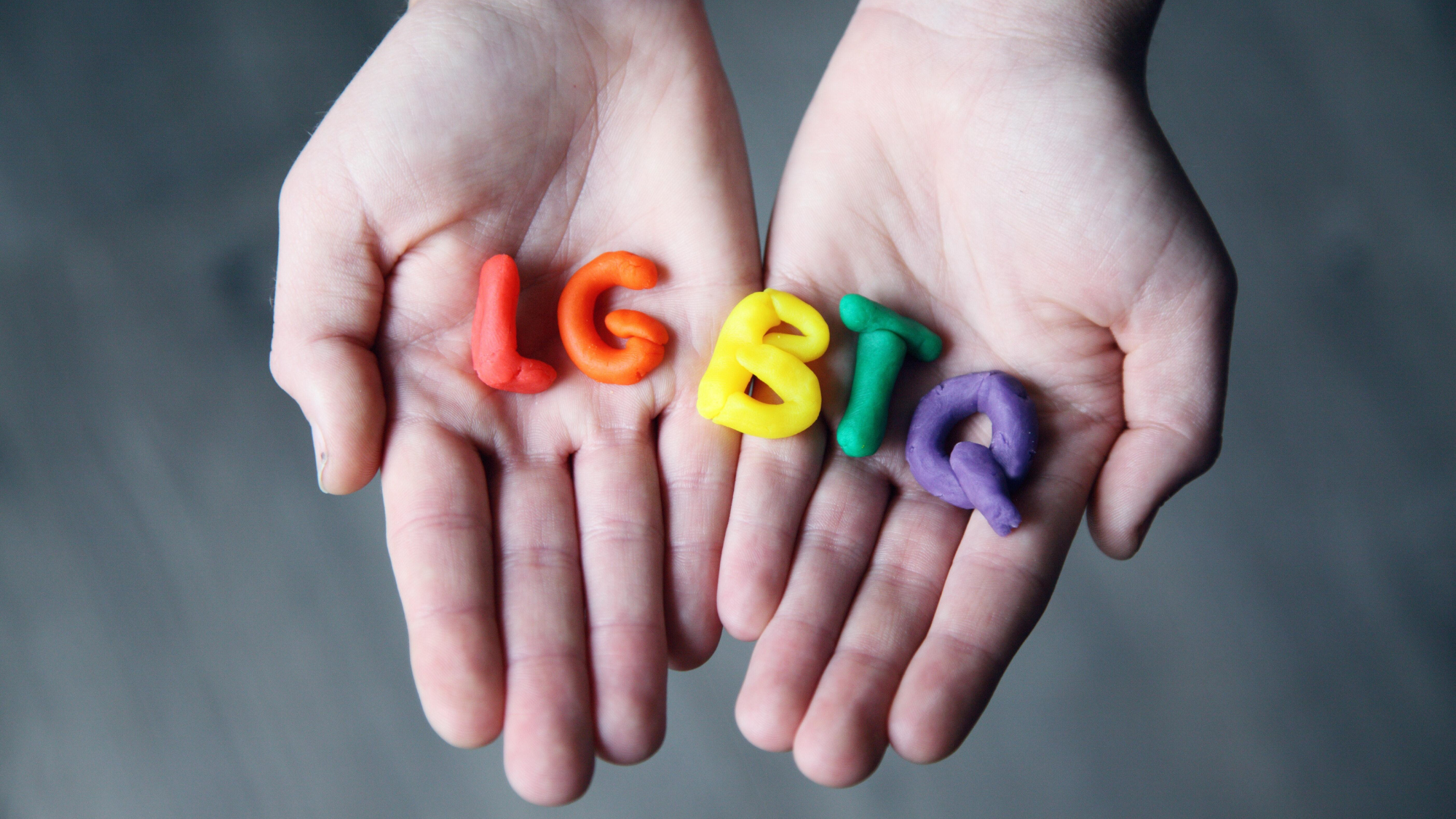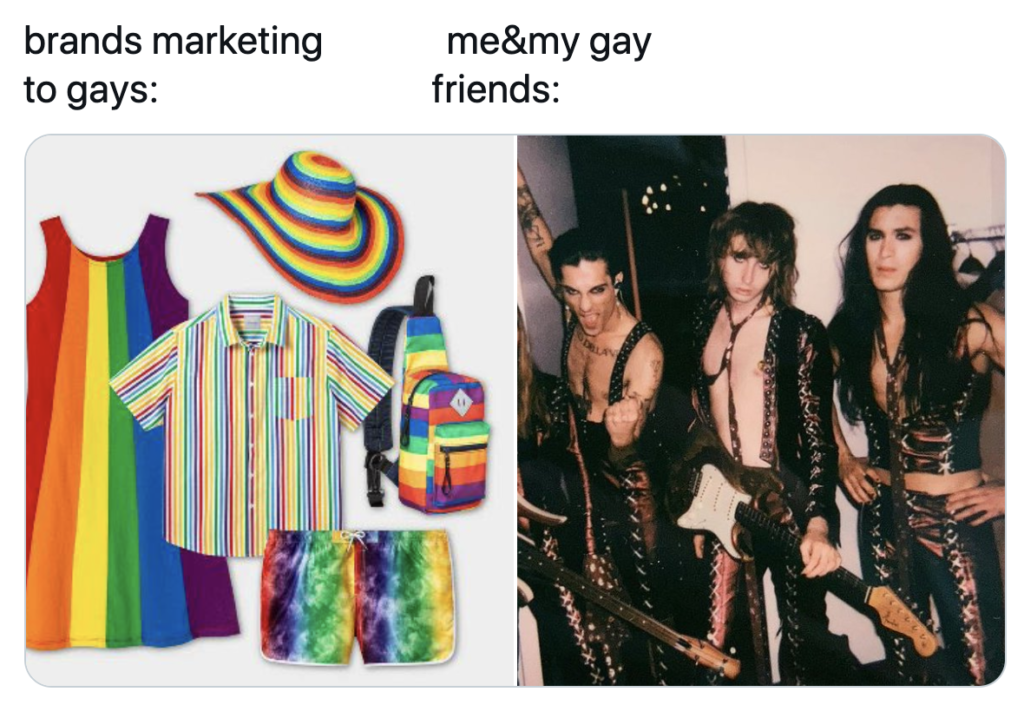

I really miss Pride celebrations.
It’s a time for the entire LGBTQ+ community to come together and celebrate accepting who we are. It’s also a chance for everyone to engage with queer issues and educate themselves.
However, sadly the pandemic threw a Miley Cyrus wrecking ball at 2020 global celebrations… But London Pride is back on for 2021 and I really hope more brands (and agencies) get it right.
My life basically revolves around memes and one of my favourites from the year is currently going viral as pride month approaches.

Although hilarious, it also speaks volumes to how advertising and marketing often fail the LGBTQ+ community. This has been spoken about for years and is hardly a hot take. However, as I get older (and further away from my twink years) I do find myself getting more irritated with queer representation in brand campaigns. We need to be bolder. We need to do more.
Throwing a gay couple in a film or plastering your socials with rainbow flags just doesn’t cut it. Rather than challenge public opinion, many brands seem to be happy to showcase parts of the LGBTQ+ community which are easily palatable for a mainstream straight audience. For example, by featuring a white gay couple, or harnessing the recent rise of drag queens.
Don’t get me wrong – representation is almost always great. I’d be lying if I said I didn’t feel represented when I see a gay couple on screen. However, the G in LGBTQ+ is hardly the section of the acronym that needs the most brand support and solidarity. Transgender rights are constantly under threat – whether that’s by once loved children authors or from the UK government. It’s time for brands to take a more active role in helping the more marginalised members of the LGBTQ+ community – especially if they want to continue to commercialise pride (and take a slice of the so-called pink pound).
The first thing I’d like to see brands and agencies do is break up the LGBTQ+ acronym. That means fully understanding what each of those letters mean. Of course, gay men should be represented, but their presence shouldn’t tick off the entire community.
For example, my experiences as a white gay man are very different to someone who identifies as trans, or a queer person of colour. So can you really say you’ve ticked the LGBTQ+ diversity box by just including someone like me in your campaign? While there has been some change, most brands are still failing (or not trying) to understand our differences – leaving most of the community underrepresented.
On the flip side, brands shouldn’t just select a new letter to appear ‘woke’. Instead, let’s include meaningful thought and direct input from the LGBTQ+ community – whether that be colleagues, artists, storytellers or contributors. Brands, including non-profits, have the power to raise awareness of the challenges faced by LGBTQ+ people and help drive positive change. This would create an affinity between the community and brand which can only mean a good thing for business – just look at how Absolut Vodka has managed it.
Pride month is a funny one. It puts an incredible spotlight on the issues still faced by the LGBTQ+ community, but the fight for equality should be a year-round responsibility. The influence brands have across mainstream audiences and public opinion is huge. It’s time to break up the LGBTQ+ acronym and create content that represents us all.
So please, don’t just tick the box.